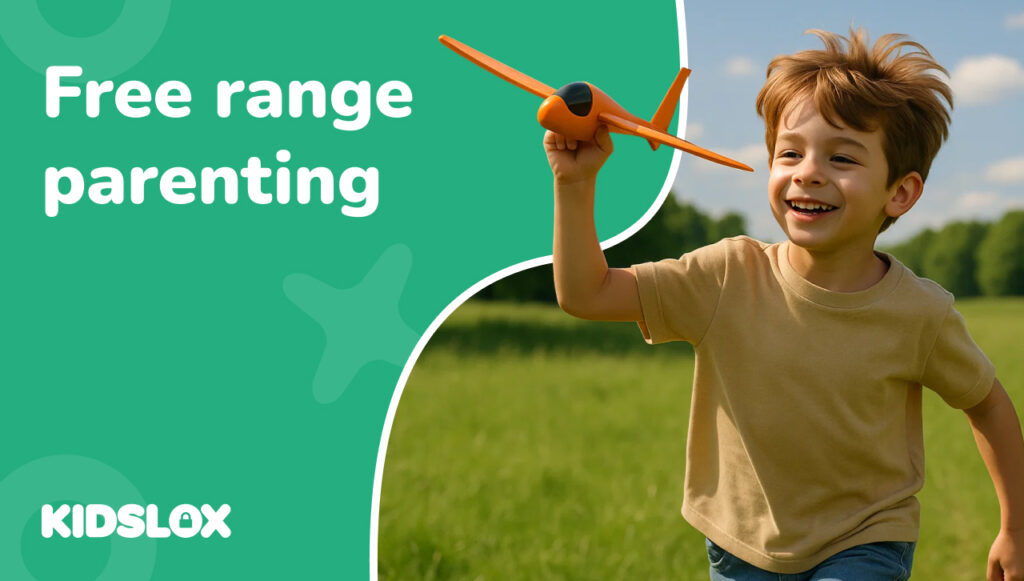Trust, Independence, and Letting Kids Roam
In a world of GPS trackers, helicopter parenting, and after-school calendars booked to the minute, the idea of letting children walk to the park alone or ride their bikes to school can feel almost unthinkable. But for a growing number of parents, that’s exactly the point. Welcome to free-range parenting — an approach that pushes back against the pressure to supervise every moment and instead encourages independence, resilience, and trust.
This style of parenting calls back to earlier generations — when kids played outside until the streetlights came on, solved problems without adult intervention, and learned by doing. It raises the question: have we gone too far in trying to keep our children safe?
With rising concerns about anxiety, screen dependency, and emotional fragility, free-range parenting is regaining attention. It’s not about being careless — it’s about being intentional, giving kids the space to grow, and helping them learn to navigate the world confidently.
What Is Free-Range Parenting?
Free-range parenting is a philosophy that encourages children to explore the world with greater freedom — within safe and age-appropriate boundaries. It’s based on the belief that independence fosters confidence, problem-solving, and resilience, and that overprotection can actually hinder a child’s growth.
This approach doesn’t mean leaving kids to fend for themselves. Instead, it’s about giving them gradually increasing levels of responsibility and autonomy. A free-range parent might allow their child to walk to a local shop alone, play unsupervised in the backyard, or take public transport to school — depending on the child’s age and maturity.
The term rose to prominence thanks to Lenore Skenazy, a New York mother who, in 2008, let her 9-year-old son ride the subway home alone. The story made headlines and sparked both criticism and praise. In response, Skenazy wrote the book Free-Range Kids and launched a wider movement that questioned society’s growing culture of fear around parenting.
At its core, free-range parenting challenges the assumption that children are constantly at risk and need round-the-clock oversight. It also asks an important question: if we never let children practise independence, how can we expect them to become capable, self-reliant adults?
Free-range parenting is thoughtful and deliberate. It involves assessing your child’s maturity, understanding your environment, and allowing room for mistakes — because that’s how real learning happens.
Free-range parenting isn’t just a personal choice — it’s part of a larger cultural conversation about childhood, safety, and autonomy.
In 2018, Utah became the first U.S. state to pass a free-range parenting law, explicitly protecting parents from neglect charges for allowing children to do things like walk to school, play outside, or stay home alone — provided the child is mature enough to handle it safely. The law was sparked by concerns that parents were being investigated for reasonable decisions simply because they didn’t align with increasingly cautious norms.
Since then, other states including Texas, Oklahoma, and Illinois have proposed similar legislation, aiming to draw clear lines between neglect and independence.
Globally, the approach differs widely. In Japan, for example, it’s common — and culturally expected — for children as young as six to walk to school alone, often navigating public transport without issue. In Scandinavian countries, outdoor independence is deeply valued, with even preschoolers encouraged to play outside in all weather, unsupervised by hovering adults.
By contrast, in many parts of the United States and the UK, parenting has leaned toward constant oversight. With rising media coverage of rare worst-case scenarios, many parents feel pressured to supervise every moment, even when they believe their children are ready for more freedom.
Free-range parenting pushes back on that narrative — arguing that when we trust kids with more responsibility, they rise to it.
Free-Range Parenting: Pros and Cons
Like any parenting style, free-range parenting comes with strengths and challenges. It’s not a one-size-fits-all approach, and how it works can depend heavily on the child, the environment, and the values of the family and wider community.
What are the Pros?
Fosters independence and confidence
When kids are given the chance to solve problems, take initiative, and move through the world on their own terms, they build a stronger sense of self. That confidence carries over into school, friendships, and later, work.
Encourages real-world problem-solving
Children learn best by doing. Whether it’s navigating a new route, resolving a playground disagreement, or figuring out what to do when plans go sideways, free-range parenting helps kids think critically and adapt.
Reduces dependence on adults
Constant supervision can unintentionally teach kids they’re not capable on their own. Free-range parenting helps reverse that, fostering self-reliance.
Supports physical activity and unstructured play
With more freedom comes more time outside — biking, exploring, inventing games — rather than being inside on screens or in tightly scheduled activities.
And the Cons?
Safety concerns
Not all communities are equally safe or walkable. Parents must weigh risks based on their environment and their child’s maturity.
Judgement from others
Letting your child walk to school alone might raise eyebrows — or trigger reports — especially in cultures where constant supervision is expected.
Legal grey areas
In some places, laws haven’t caught up with this approach, making it hard to know what’s considered acceptable or reportable.
Free-Range Parenting in the Digital Age
While the original free-range movement focused on giving kids more physical freedom — like walking to school or playing unsupervised — today’s parents are also navigating a very different frontier: the digital world.
In some ways, technology complicates free-range parenting. Parents are now balancing not just when to give physical independence, but also how much digital freedom to allow. Should a 10-year-old have a smartphone? Should location tracking be mandatory? When does screen time become digital helicoptering?
Like the physical aspects of Free Range Parenting, the virtual ones are best defined through the filter of age-appropriateness. No one would advocate for the unfettered access to the dangers of the internet, or allow children to spend untold hours on their devices. Rather it’s more about setting boundaries, and allowing children greater autonomy and privacy with their virtual interactions over policing and monitoring every click.
How to Start Free-Range Parenting
If the idea of free-range parenting resonates with you, but you’re unsure where to begin, the good news is that it doesn’t require a dramatic shift overnight. The key is starting small, building trust, and adjusting based on your child’s maturity and environment.
- Start with Low-Stakes Independence
Begin by allowing your child to take small, age-appropriate steps toward independence. That might mean letting them walk the dog around the block, choose their own clothes, or pay at the shop while you wait nearby.
- Teach Safety Skills First
Free-range parenting doesn’t skip safety — it prepares kids for it. Talk through scenarios: What would you do if you got lost? How do you cross a busy road safely? Who do you call in an emergency? Giving children the tools to handle situations builds your confidence and theirs.
- Use Check-Ins, Not Constant Tracking
Instead of micromanaging every movement, agree on check-in points. For example, ask your child to call or text when they arrive somewhere safely, or to return home by a set time. This builds accountability without surveillance.
- Talk Openly About Boundaries
Make sure your child understands the difference between independence and invisibility. Discuss rules clearly, and explain that freedom grows with responsibility.
- Expect Mistakes — and See Them as Learning
Your child may forget to check in or misjudge a situation. Treat these moments as opportunities to learn and recalibrate, not punish.
Free-Range Parenting and Community Trust
Free-range parenting doesn’t happen in a vacuum — it depends on a sense of community. When neighbours look out for each other’s kids and schools support independence, children benefit from a wider safety net. Building relationships with teachers, local shopkeepers, or other parents can help reinforce a sense of shared responsibility and allow more freedom with confidence. In that way, free-range parenting is not just a personal philosophy — it’s a quiet act of community-building.
Is Free-Range Parenting Right For Me?
Free-range parenting isn’t about throwing caution to the wind. It’s about rethinking how we prepare our children for the real world — not just with rules and routines, but with experience, autonomy, and trust.
In a culture increasingly defined by control, surveillance, and constant input, choosing to step back — even a little — can feel counterintuitive. But it’s often in those unsupervised, unstructured moments that children discover their own strengths. They learn to make decisions, solve problems, manage risk, and bounce back from mistakes. These are skills that no amount of instruction can truly replace.
Of course, free-range parenting isn’t one-size-fits-all. It looks different in a quiet village than it does in a busy city. It might start with a walk to a neighbour’s house or playing outside without hovering. The point isn’t how far you let your child go — it’s that you trust them to take steps toward independence when they’re ready.
As parents, we want to protect our children. But sometimes, the best protection we can offer is confidence in their ability to navigate the world — with us just a little further in the background.





